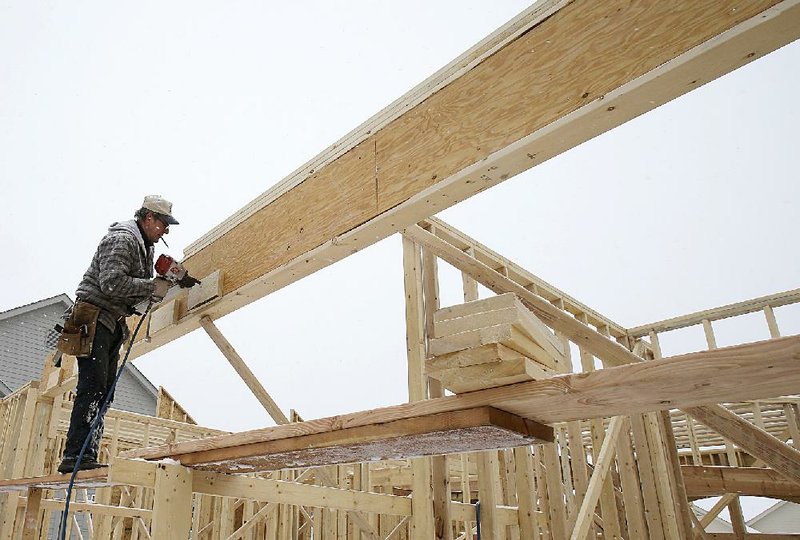WASHINGTON -- The number of people seeking U.S. unemployment benefits held steady last week, as the job market continues to outpace broader economic growth.
The Labor Department said Thursday that weekly applications for unemployment aid rose slightly by 1,000 to a seasonally adjusted 291,000. Unemployment claims were subdued for the past two weeks after winter storms caused them to spike at the end of February because of closed schools and construction sites.
The four-week average, a less volatile measure, increased 2,250 to 304,750. That average has dropped 7.5 percent over the past year.
Applications are a proxy for layoffs. When employers keep their workers, it is generally a sign that they expect continued economic growth and will likely increase hiring. Applications below 300,000 are typically consistent with healthy job gains.
"There's clear progress in the labor market," said Jim O'Sullivan, chief U.S. economist at High Frequency Economics in Valhalla, N.Y.
The relatively modest number of applications contrast with the Federal Reserve's view announced Wednesday that economic growth has lost some momentum since the start of 2015.
"These data appear to defy" the Fed's statement, said Ian Shepherdson, chief economist at Pantheon Macroeconomics. "So far, though, we see no sign of slower hiring either."
The historically low level of benefit applications was matched by a surge in hiring. Employers have added an average of 288,000 jobs a month since December, including a net new 295,000 jobs in February. The gains have cut the unemployment rate to 5.5 percent from 6.7 percent a year ago.
Despite the job growth, other parts of the economy have stumbled during February's snowstorms. Retail sales, housing starts and factory output each dropped last month, a sign of either a temporary setback because of cold weather or evidence that the additional paychecks generated by the recent hiring has done little to improve consumer spending.
Average hourly wages have climbed just 2 percent over the past 12 months, a sluggish pace that has left inflation-adjusted household incomes lower now than they were before the start of the recession in late 2007.
The Atlanta branch of the Federal Reserve forecasts that the economy grew at an anemic annualized pace of just 0.3 percent during the first three months of this year, a severe slowdown from 2.2 percent in the fourth quarter of 2014 and growth averaging nearly 5 percent in the middle of last year.
An index designed to predict the future health of the economy rose by a modest amount in February an indication the economy's momentum slowed.
The New York-based Conference Board said its index of leading indicators rose 0.2 percent last month, matching the January increase. The gains in both months were the smallest since the index rose by just 0.1 percent in August.
Analysts said that the smaller increases over the past two months may be signaling a period of more moderate activity.
"Weakness in the industrial sector and business investment is holding economic growth back despite improvements in labor markets and consumer confidence," Conference Board economist Ataman Ozyildirim said Thursday.
A third report Thursday showed that the U.S. trade deficit widened in the October-December quarter to the biggest imbalance in more than two years as exports of goods fell at a faster pace than imports.
The Commerce Department said the deficit in the current account increased to $113.5 billion, an increase of 14.7 percent from a third-quarter deficit of $98.9 billion.
For the entire year, the current account deficit rose 2.6 percent to $410.6 billion. It was the largest annual deficit since 2012.
A widening trade deficit contributed to the slowdown in overall economic growth in the fourth quarter and is expected to be a drag on growth in 2015 as the stronger dollar makes American products less competitive on overseas markets.
Paul Ashworth, chief U.S. economist at Capital Economics, said the current account deficit likely will narrow in the first quarter, reflecting lower prices for imported oil, but then start rising for the rest of this year.
"The stronger dollar and the relative weakness of economic growth outside the United States suggests the deficit will gradually widen" for the rest of 2015, Ashworth said.
Information for this article was contributed by Josh Boak and Martin Crutsinger of The Associated Press and by Shobhana Chandra of Bloomberg News.
Business on 03/20/2015
